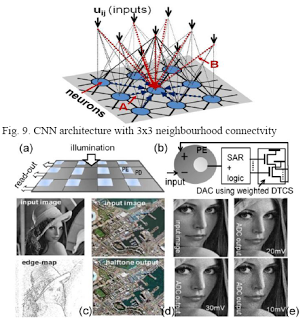

| Visitors Now: | |
| Total Visits: | |
| Total Stories: |

| Story Views | |
| Now: | |
| Last Hour: | |
| Last 24 Hours: | |
| Total: | |
Intel Reveals Spin-based Neuromorphic Chip Design with up to 300 times lower energy computation
From
Arxiv – Proposal For Neuromorphic Hardware Using Spin Devices (4 pages)
We present a design-scheme for ultra-low power neuromorphic hardware using emerging spin-devices. We propose device models for ‘neuron’, based on lateral spin valves that constitute of nano-magnets connected through metal-channels. Such magneto-metallic neurons can operate at ultra-low terminal voltage of ~20 mV, resulting in small computation energy. Use of domain wall magnets as programmable ‘synapse’ and as ‘integrating-neurons’ is proposed. Magnetic tunnel junctions are employed for interfacing the spin-neurons with charge-based devices like CMOS, for large-scale networks. Device-circuit co-simulation-framework is used for simulating such hybrid designs, in order to evaluate system-level performance. We present the design of different classes of neuromorphic architectures using the proposed scheme that can be suitable for different applications like, analog-data-sensing, data-conversion, cognitive-computing, associative memory, programmable-logic and analog and digital signal processing. We show that the spin-based neuromorphic designs can achieve 15X-300X lower computation energy for these applications, as compared to state of art CMOS designs.
(a) On sensor image processing architecture (b) SAR-ADC using spintronic neuron, and simulation results for (c) edge-detection, (d) half-toning, and (e) digitization (using spin-CMOS hybrid SAR-ADC : lowering ΔV increases % noise and hence degrades accuracy)
Neuromorphic chips are item 5 in my list of mundane singularity technologies.
By the end of 2012, there will likely be integrated one square neuromorphic chips with about ~10 billion synapses and ~1 million neurons. This work is in the DARPA Synapse project. In 2015, the neuromorphic chips are targeted to have 100 times more capability. The military is developing neuromorphic chips for autonomous, unmanned, robotic systems and natural human-machine interfaces and diverse sensory and information integration applications in the defense and civilian sector.
See more and subscribe to NextBigFuture at
Source:



